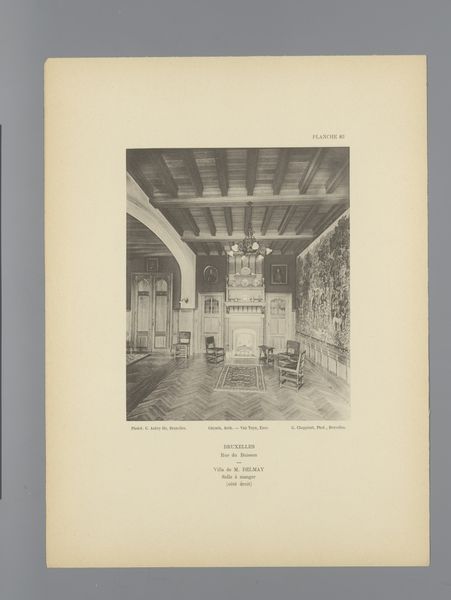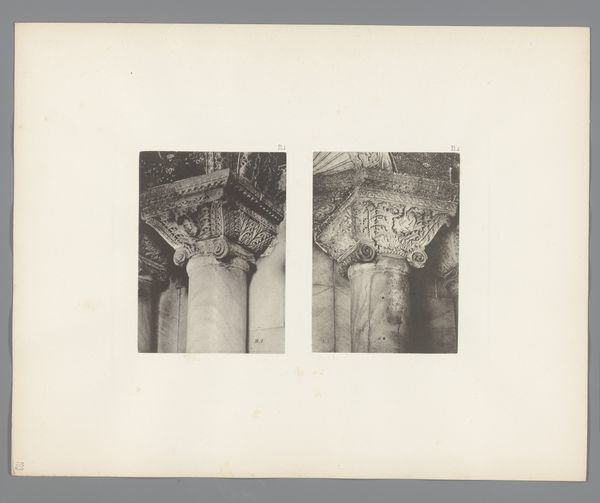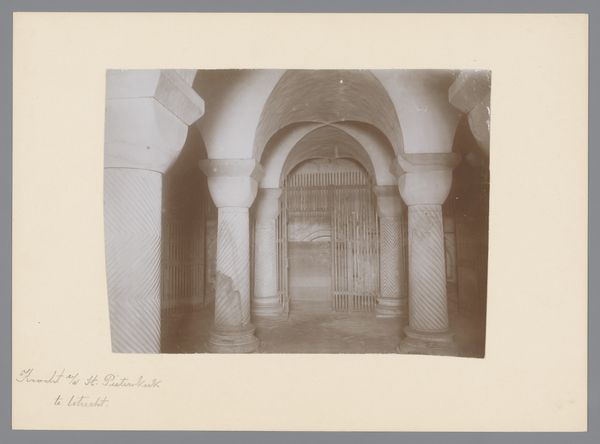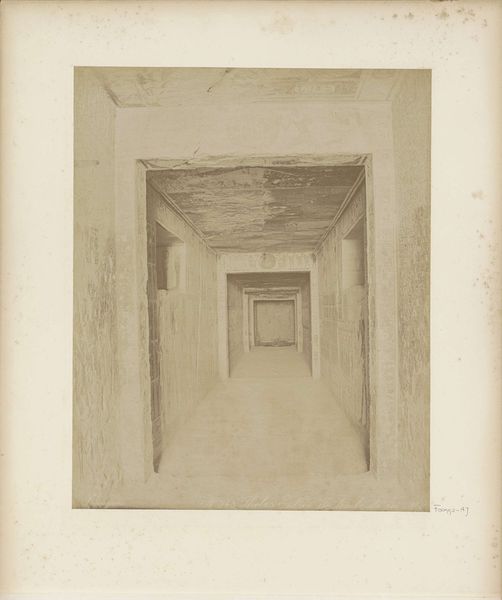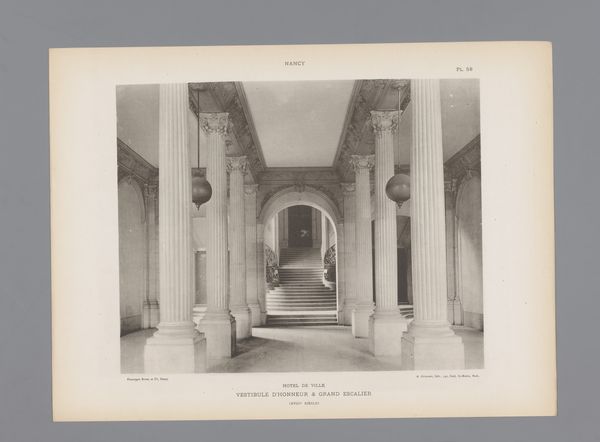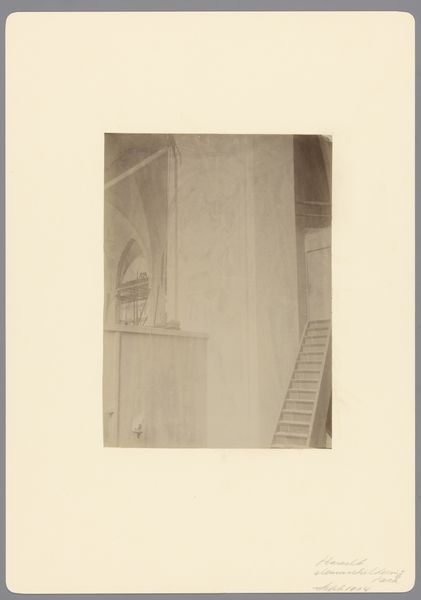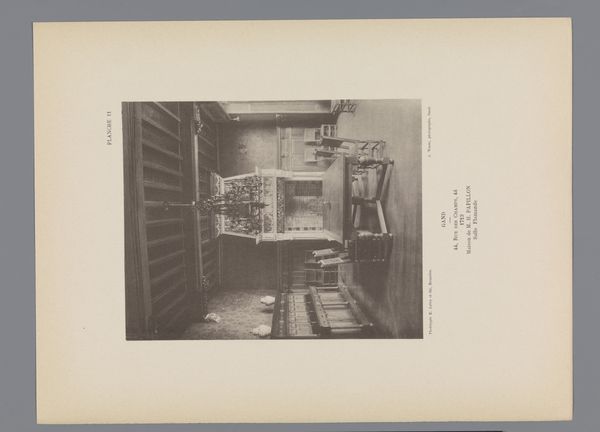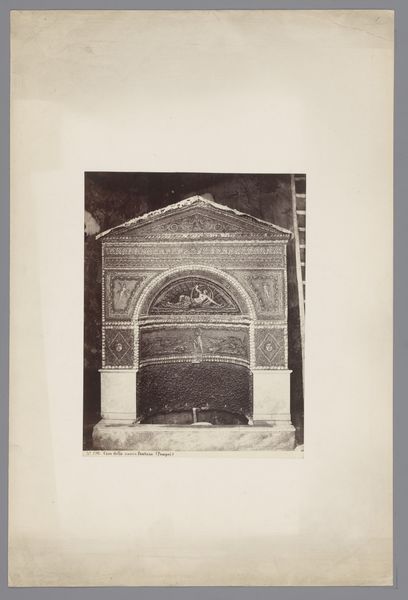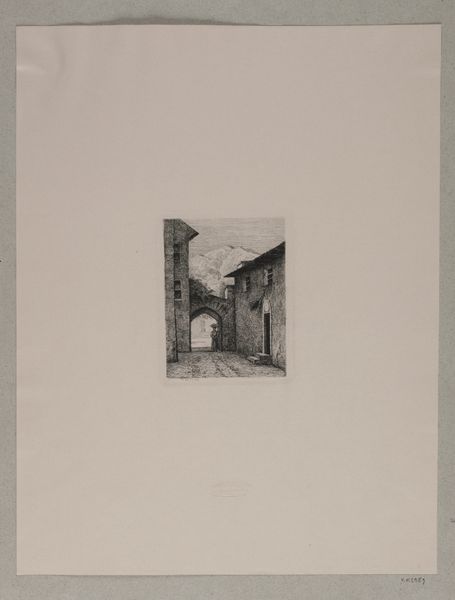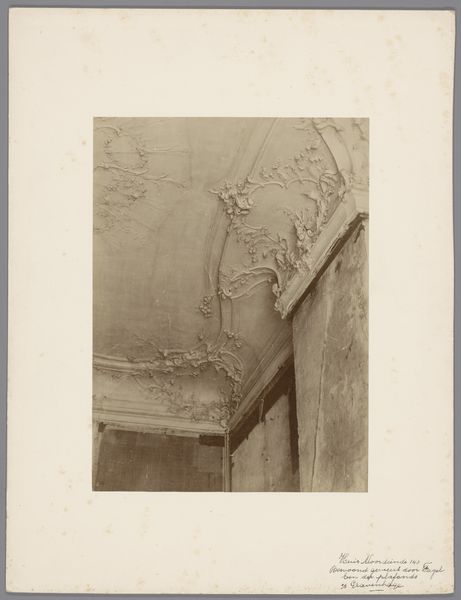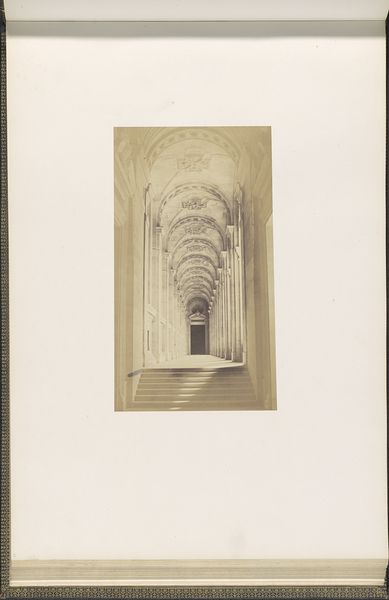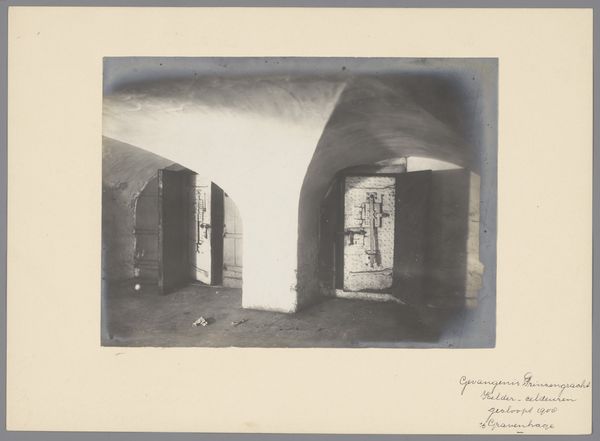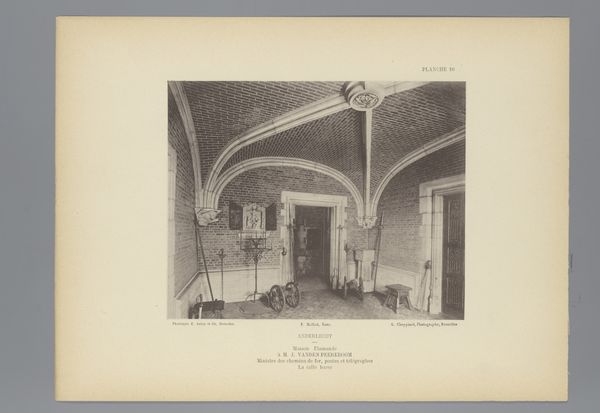
print, photography
# print
#
photography
#
cityscape
#
realism
Dimensions: height 48.5 cm, width 66 cm
Copyright: Rijks Museum: Open Domain
Curator: This photograph by P. Oosterhuis, taken in 1892, is titled "Kazerne voor een Regiment Infanterie te Amersfoort"—Barracks for an Infantry Regiment in Amersfoort. It’s a striking example of late 19th-century photography, utilizing the print medium to capture what seems like a mundane interior. Editor: Mundane, maybe. But also utterly haunted. There's a chill here, a feeling of strict order, rows of… what are those, lockers? They give the impression of faceless uniformity. Makes you think of lives regimented, put in boxes, ready to ship out. Curator: Exactly. The row of lockers you pointed out illustrates a key component to the army at the time. Consider the material; it's basic, probably cheap pine, assembled for function rather than aesthetics. The army prioritizes utility above all else, evidenced by the spacing between lockers which are close, denoting that even in rest, people of this Regiment do not have private or free space. Editor: It's stark, utilitarian—a place devoid of individuality, echoing the kind of institutional greyness of a Wes Anderson film gone wrong. But notice how the photograph creates a central view through a distant doorway with a military person behind glass! It gives you a glimpse, and a strange sort of human element in an otherwise almost inhuman space. What about those stone blocks, for drainage perhaps? Curator: Function and cleanliness were incredibly valued here. Those are drainage stones, they also offer structural support which is an innovative use for what one might consider waste material. They signify the material and social contexts of late 19th-century Dutch military life and underscore the labor invested in maintaining a sanitary, disciplined environment, even within the private, hidden spaces like the soldiers' personal spaces. Editor: There is something so cold, something ghostly even with the little light peeking into what appears to be some form of human accommodation.. This isn't just a cityscape; it's an introspective space. Curator: I agree; this perspective is far removed from conventional photographic prints, emphasizing functionality, labor, and materiality. Hopefully people can learn more and consider how the construction impacted their personal life. Editor: Yes, a poignant meditation on the architecture of control. An unforgettable reminder of those lives caught up in history's gears.
Comments
No comments
Be the first to comment and join the conversation on the ultimate creative platform.
